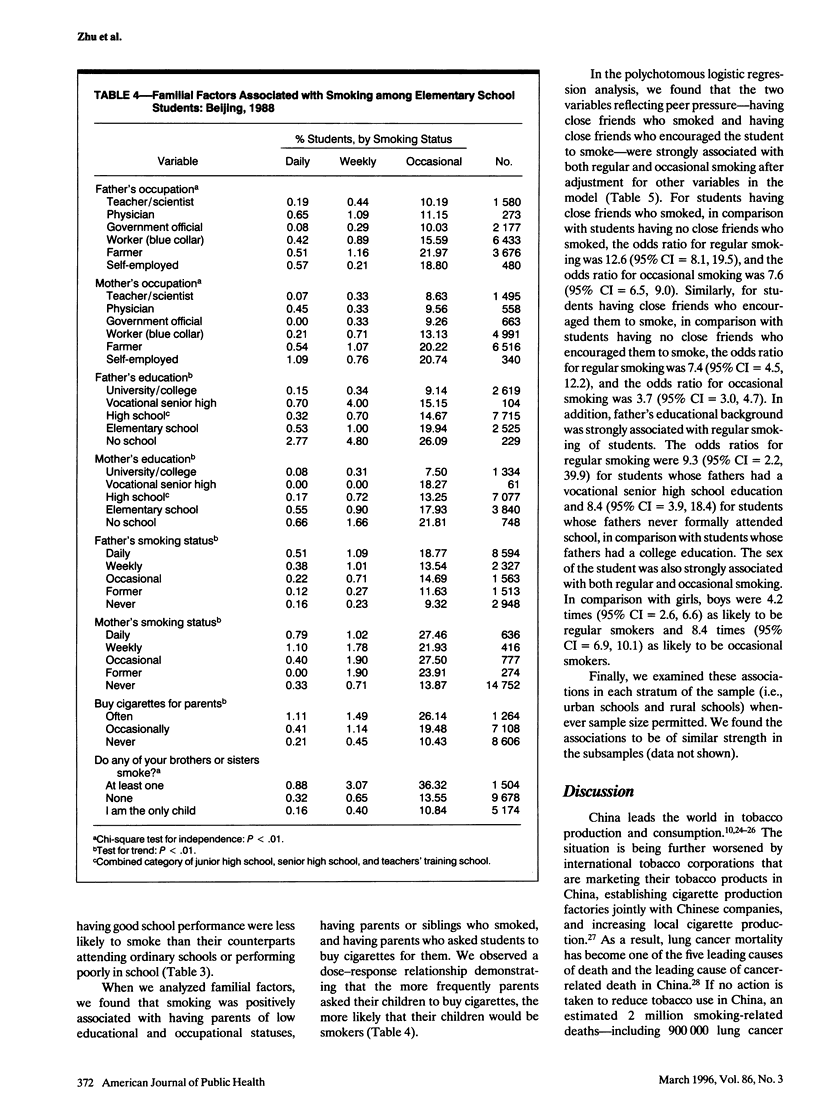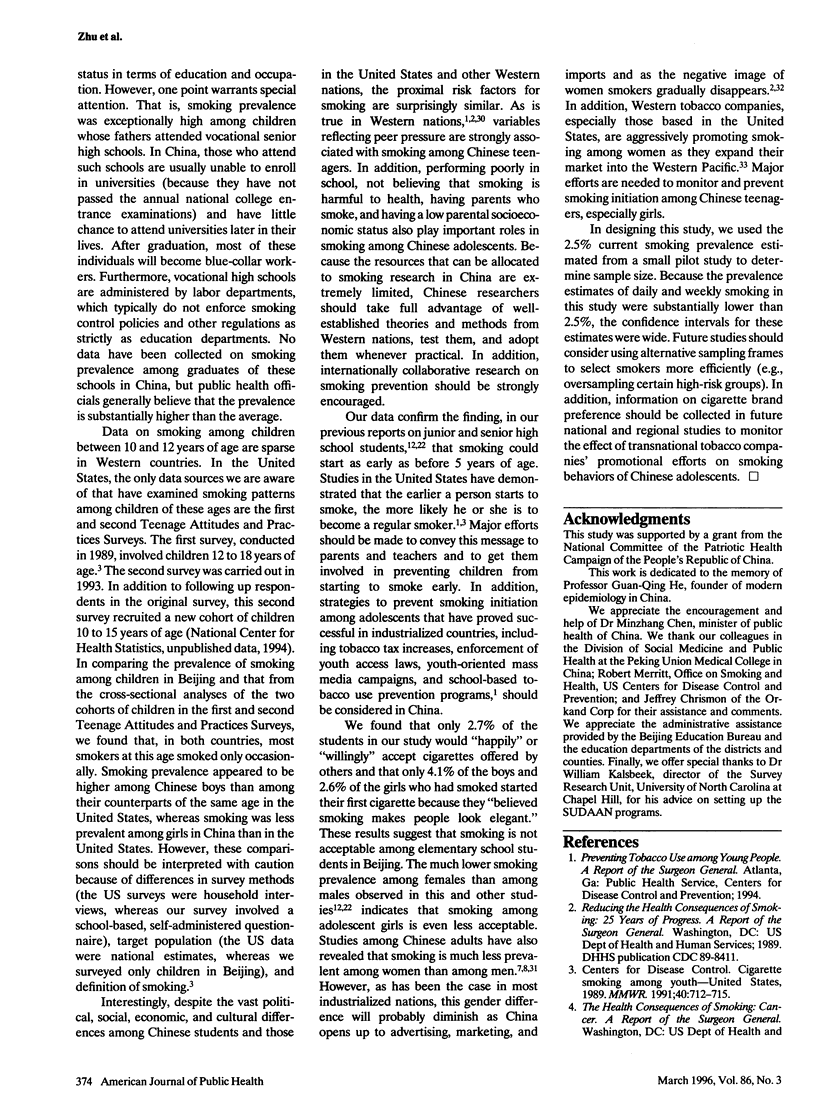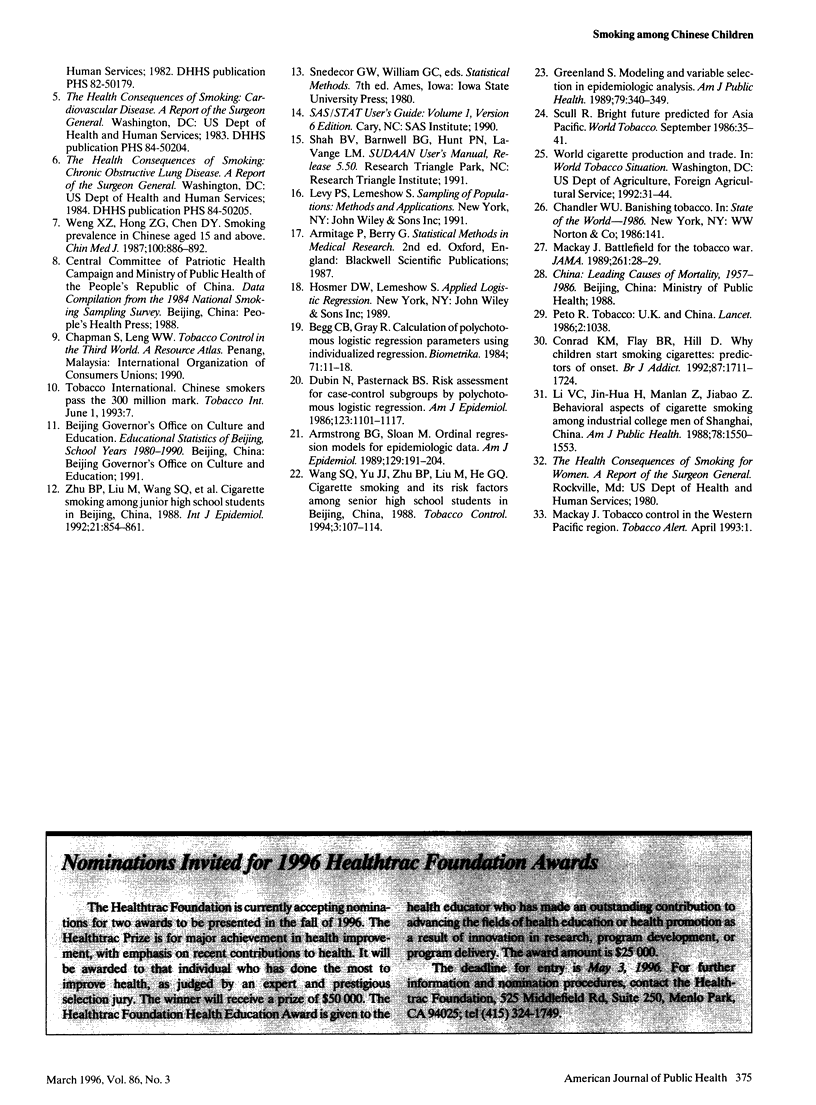Abstract
OBJECTIVES. This study investigated patterns of and risk factors for smoking among elementary school children in Beijing, China. METHODS. In 1988, anonymous questionnaires were administered to a multistage stratified cluster sample of 16996 students, aged mostly 10 to 12, in 479 fourth- to sixth-grade classes from 122 Beijing elementary schools. RESULTS. Approximately 28% of boys and 3% of girls had smoked cigarettes. The most frequently cited reasons for smoking initiation were "to imitate others' behavior" and "to see what it was like." Girls were more likely to get cigarettes from home than to purchase their own. Having close friends who smoked and being encouraged by close friends to smoke were strong risk factors for smoking. Smoking was also associated with lower parental socioeconomic status; having parents, siblings, or teachers who smoked; buying cigarettes for parents; performing poorly in school; and not believing that smoking is harmful to health. CONCLUSIONS. Gender differences in smoking prevalence among adolescents in China are larger than those among US teenagers, whereas the proximal risk factors for smoking are similar. Major efforts are needed to monitor and prevent smoking initiation among Chinese adolescents, particularly girls.
Full text
PDF







Selected References
These references are in PubMed. This may not be the complete list of references from this article.
- Armstrong B. G., Sloan M. Ordinal regression models for epidemiologic data. Am J Epidemiol. 1989 Jan;129(1):191–204. doi: 10.1093/oxfordjournals.aje.a115109. [DOI] [PubMed] [Google Scholar]
- Conrad K. M., Flay B. R., Hill D. Why children start smoking cigarettes: predictors of onset. Br J Addict. 1992 Dec;87(12):1711–1724. doi: 10.1111/j.1360-0443.1992.tb02684.x. [DOI] [PubMed] [Google Scholar]
- Dubin N., Pasternack B. S. Risk assessment for case-control subgroups by polychotomous logistic regression. Am J Epidemiol. 1986 Jun;123(6):1101–1117. doi: 10.1093/oxfordjournals.aje.a114338. [DOI] [PubMed] [Google Scholar]
- Greenland S. Modeling and variable selection in epidemiologic analysis. Am J Public Health. 1989 Mar;79(3):340–349. doi: 10.2105/ajph.79.3.340. [DOI] [PMC free article] [PubMed] [Google Scholar]
- Li V. C., Hu J. H., Zhou M. L., Zheng J. B. Behavioral aspects of cigarette smoking among industrial college men of Shanghai, China. Am J Public Health. 1988 Dec;78(12):1550–1553. doi: 10.2105/ajph.78.12.1550. [DOI] [PMC free article] [PubMed] [Google Scholar]
- Mackay J. Battlefield for the tobacco war. JAMA. 1989 Jan 6;261(1):28–29. [PubMed] [Google Scholar]
- Peto R. Tobacco: UK and China. Lancet. 1986 Nov 1;2(8514):1038–1038. doi: 10.1016/s0140-6736(86)92645-0. [DOI] [PubMed] [Google Scholar]
- Weng X. Z., Hong Z. G., Chen D. Y. Smoking prevalence in Chinese aged 15 and above. Chin Med J (Engl) 1987 Nov;100(11):886–892. [PubMed] [Google Scholar]
- Zhu B. P., Liu M., Wang S. Q., He G. Q., Chen D. H., Shi J. H., Shang J. Z. Cigarette smoking among junior high school students in Beijing, China, 1988. Int J Epidemiol. 1992 Oct;21(5):854–861. doi: 10.1093/ije/21.5.854. [DOI] [PubMed] [Google Scholar]


